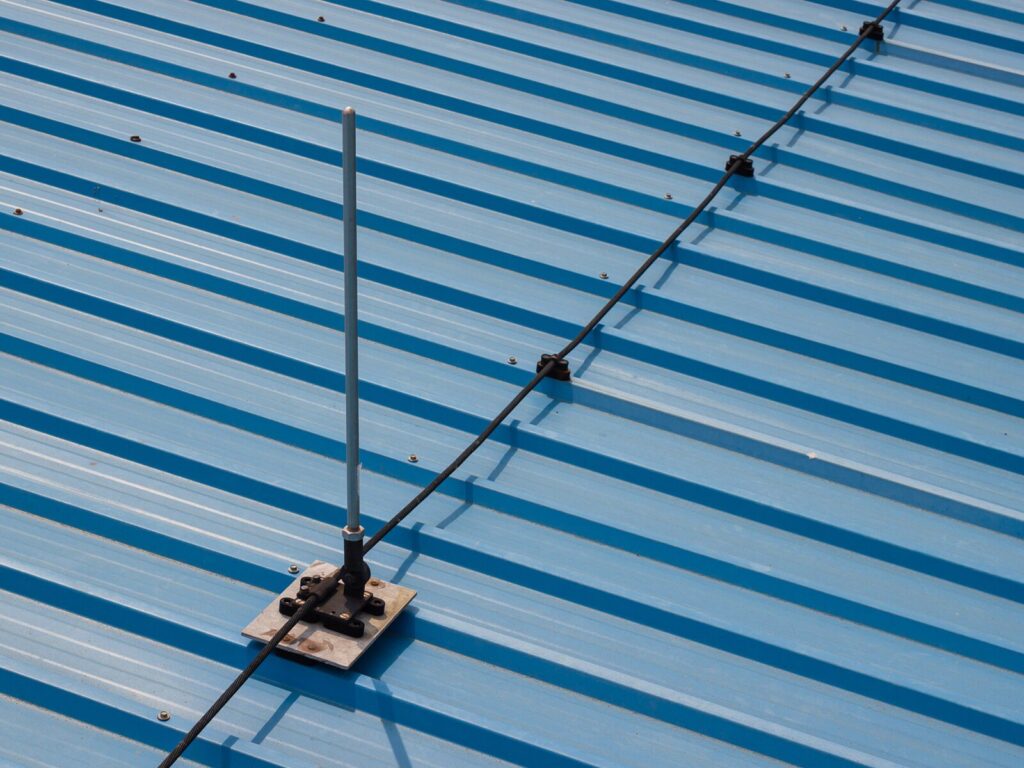Applied Technical Services can design, install, and evaluate a lightning protection system for a building with a professional touch. Lightning can cause injuries through direct strikes, side flashes, ground currents, streamers, or conducting through nearby objects. When lightning strikes a building, it may start a fire that endangers the building’s occupants and materials. Lightning can also disrupt data system availability, electricity, and appliance performance.
Meanwhile, a lightning protection system intercepts the powerful electric current from a lightning bolt and directs it to a terminal in the ground. The system consists of intricately connected parts that operate in unison. These parts include:
- Air terminals
- Conductors
- Grounding electrodes
- Cables
- Fasteners and clamps
- Strike termination devices
ATS can design and install a new lightning protection system, then perform regular inspections to maintain the safety of your commercial or residential property.
Lightning Protection System Design & Installation
An effective lightning protection system can mean the difference between life and death. However, these complex systems require professional design and installation.
When designed concurrently with the building, a lightning protection system can flow with the overall aesthetic. Architects and structural engineers will plan around the conductive electrical and plumbing systems for added protection. We can also design a lightning protection system for an existing building.
Our designs and installations will address the most vulnerable locations on the building. Lightning tends to strike objects higher than their surroundings, such as the tip of a skyscraper or a shaft house over a mine. Air terminals, such as a lightning rod, should extend beyond the highest point of the structure to guide lightning away from vulnerable locations:
- Chimneys
- Flagpoles
- Parapets
- Ridges
- Roof corners
- Skylights
- Spires and steeples
- Towers
- Water tanks
Lightning Protection System Inspection & Maintenance
Lightning protection systems require inspections and maintenance every few years due to weathering and aging. For example, the metal fasteners that connect the bonding conductors to the building will corrode from exposure to rainwater. UL 96A and NFPA 780 stipulate that the system requires regular inspections.
When to Get an Inspection
The UL and NFPA recommend inspections in any of the following circumstances:
- Yearly visual inspection by building owner
- Professional inspection every five years
- Professional inspection before and after roof work and building expansions
- Visual inspection after roof damage or lightning strike
ATS can help create an inspection schedule that addresses the full needs of the lightning protection system for a building. The NFPA recommends that building owners stagger inspections across different seasons for an accurate record of the system’s performance throughout various climate conditions. Areas of severe climate change may need biannual inspections.
What Happens During an Inspection
During a professional inspection, ATS evaluates the conditions of visible and concealed system components. We can document and diagnose problems with the system based on continuity and ground resistance tests.
After an inspection, ATS can propose repairs to ensure the system functions effectively and meets changes in UL and NFPA codes. UL recommends that the system be re-certified after five years.
ATS can help maintain the lightning protection system and determine when it is time to replace the entire system.
About ATS and Our Family of Companies
ATS is a multidisciplinary company based in Marietta, Georgia. Founded in 1967, we support clients across a variety of industries through consulting engineering, calibration, inspection, and testing services. Today, the expanding ATS family of companies enables us to reach more clients than ever.
We are proud to uphold a reputation for quality service with a quick turnaround rate. As such, we strive to follow industry standards and best practices. Our ISO/IEC 17025:2017 accredited labs are capable of chemical, calibration, mechanical, and electrical tests powered by innovative technology and experienced technicians.
Contact Us
Call +1 (888) 287-5227 to learn more about how ATS can design and maintain a lightning protection system for your building. To request our services, call us or complete the form on this page.



